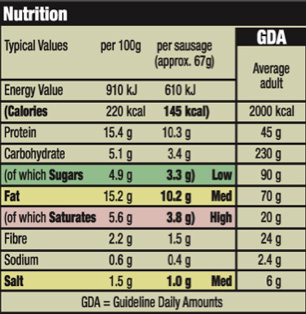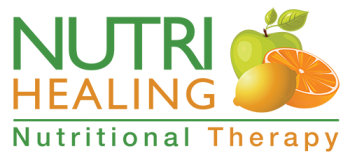How to read food labels - June 2010
Labeling & Packaging
The Food Standards Agency is concerned not only with the food we eat but with packaging and how that is labeled.
The Agency is responsible for making sure that the rules on the safety of materials that come into contact with food are enforced. Food contact materials include the containers food is sold in, the packaging, as well as the articles used to handle food, from food processing machinery to cutlery.
Food labels are a useful source of information, primarily to inform and protect consumers. Much of the Agency's current work on labeling is to help make sure that people get the information they need in an understandable form.
The following information must appear on the label:
- Name of the food
- Ingredients list
- Date Marking - use by, best before
- Claims about the product
- Nutrition labeling
- Misleading descriptions
- Allergen labeling
- Genetically modified foods and ingredients
- Lot marking - in an event of a problem with the product
- Food safety act
- Weight requirement
How to read food labels
Looking at food labels on manufactured food and drink can help when choosing a healthier diet. This information will help you to make sense of the label and to find out which nutritional claims are the best.
The nutrition information on the label of most manufactured food and drink provides useful data but they are not always easy to understand. Below is the kind of food label you will find on a packet and a guide on how to read it.

SAUSAGE LABEL
1st Column under Typical Values this shows what Nutritional value you will receive in this product and the calories.
2nd column is the amount of grams you will get from each nutrient in every 100 grams (serving size)
3rd column gives you amount of grams in each sausage
4th column gives the breakdown of nutrients you should expect to need (Guideline Daily Amounts) on a 2000 calorie controlled diet.
Decoding the data
Many Nutrition Facts panels also list the number of servings per container, number of calories, calories from fat, and grams of total fat, saturated fat, trans fat, cholesterol, sodium, carbohydrate, fiber, sugar, and protein in a standard serving of the food. Keep in mind that the nutrition information is based on one serving (100g), so if you eat half a serving, all the nutritional values listed need to be cut in half. If a product contains four servings and you eat all of it, then the calories, fat and other nutrients need to be multiplied by four.
What is a Serving?
A serving size is a standard unit of measuring foods e.g. 1 cup of pasta or 3 tablespoons or 100gms
What is a Portion?
A portion could contain many servings! Say you have spaghetti bolognaise and you have a large amount of pasta, this could contain several servings of pasta. This is called a portion.
A portion of your morning cereal for example, is however much you pour into your bowl, and a serving is the measurement listed on the box. If the label on your cereal box says ¾ cup equals 100 calories and you "free pour" your cereal into a large soup bowl, you have a portion, not a serving. You might have 3 or 4 servings in that bowl. Knowing the difference can help you work out if your portion size is too large!
What does it all mean?
ENERGY
KJ (kilojoules)/kcals (kilocalories)
If you are watching your weight you may find it useful to look at the calorie value.
Kilocalories are the same as calories
CARBOHYDRATE
Includes both sugar and starches; the figure for sugars includes both added sugar and natural sugar (e.g.: fruit sugar). Aim to choose foods with small amounts of sugar (1 teaspoon = 4g sugar).
FAT
The label shows the total amount of fat and may provide information on the different types. There are 3 main types of fat:
Saturates (unhealthy)
Monounsaturates (healthier)
Polyunsaturates (best kind)
Try to choose foods that contain the least amount of saturated fats.
SODIUM
Tells you how much salt is in the food - try to have no more than 6g salt (2.4g sodium) a day.
GUIDELINE DAILY AMOUNTS
Often given, as a guide to the amount of calories and fat adults should be eating each day. This allows you to compare how much is in a serving of the food with the total for your daily diet.
Women - 2,000 calories - Fat 70g
Men - 2,500 calories - Fat 95g
So judging if a food is a healthy choice or not depends on how it is cooked and how often you eat it, as well as the nutrition it contains. For a quick check use the following guide:
Healthy if less than
3g fat
1g saturated fat
2g sugars
0.1g sodium
0.5g fibre
Unhealthy if this amount or more
20g fat
5g saturated fats
10g sugars
0.5g sodium
3g fibre
'Per serving' for a complete meal or 'Per 100g' for a snack item such as biscuits or crisps.
Maff - Food Safety Directorate, 1998

Food Ingredients label
Regardless of what else is on the label, there is much valuable information to be learned from food ingredients on labels. All food labels list the ingredients in order of weight: The ingredient with the greatest amount of weight is listed first; the ingredient with the least amount is listed last.
A few healthy tips
- Educate yourself about health and ingredients. Remember to be aware of the serving sizes and to know that everything is based on 2,000 - calorie diet
- Limit your intake of Fats, Sugars, and Sodium
- Many 'low fat', processed, or prepared foods have added higher amounts of sodium or sugar to replace the flavour of fats.
- Look at the ingredients you are buying, remember the first ingredient on the list makes up the majority of the food. Make sure it is healthy and nutritious.
